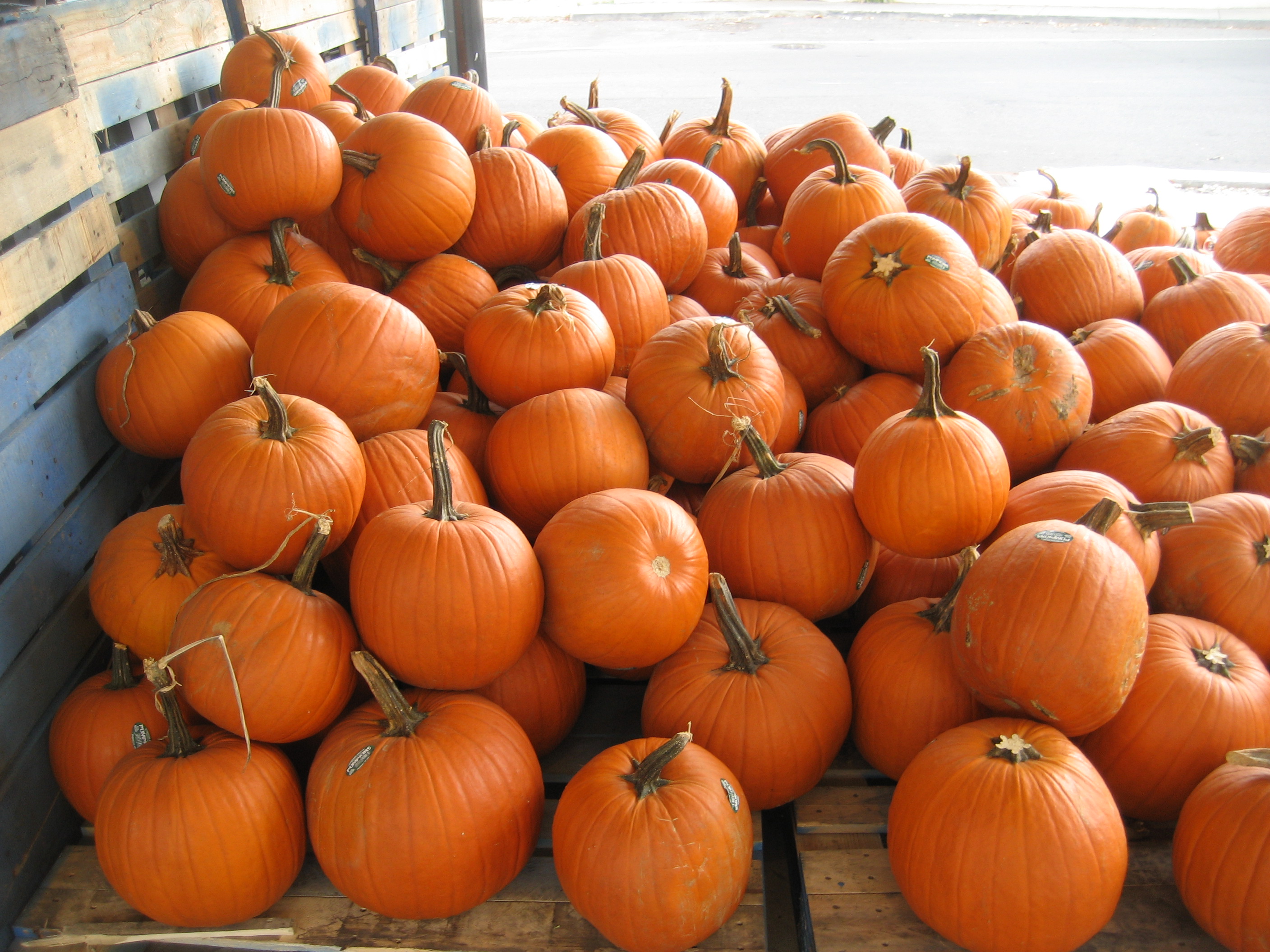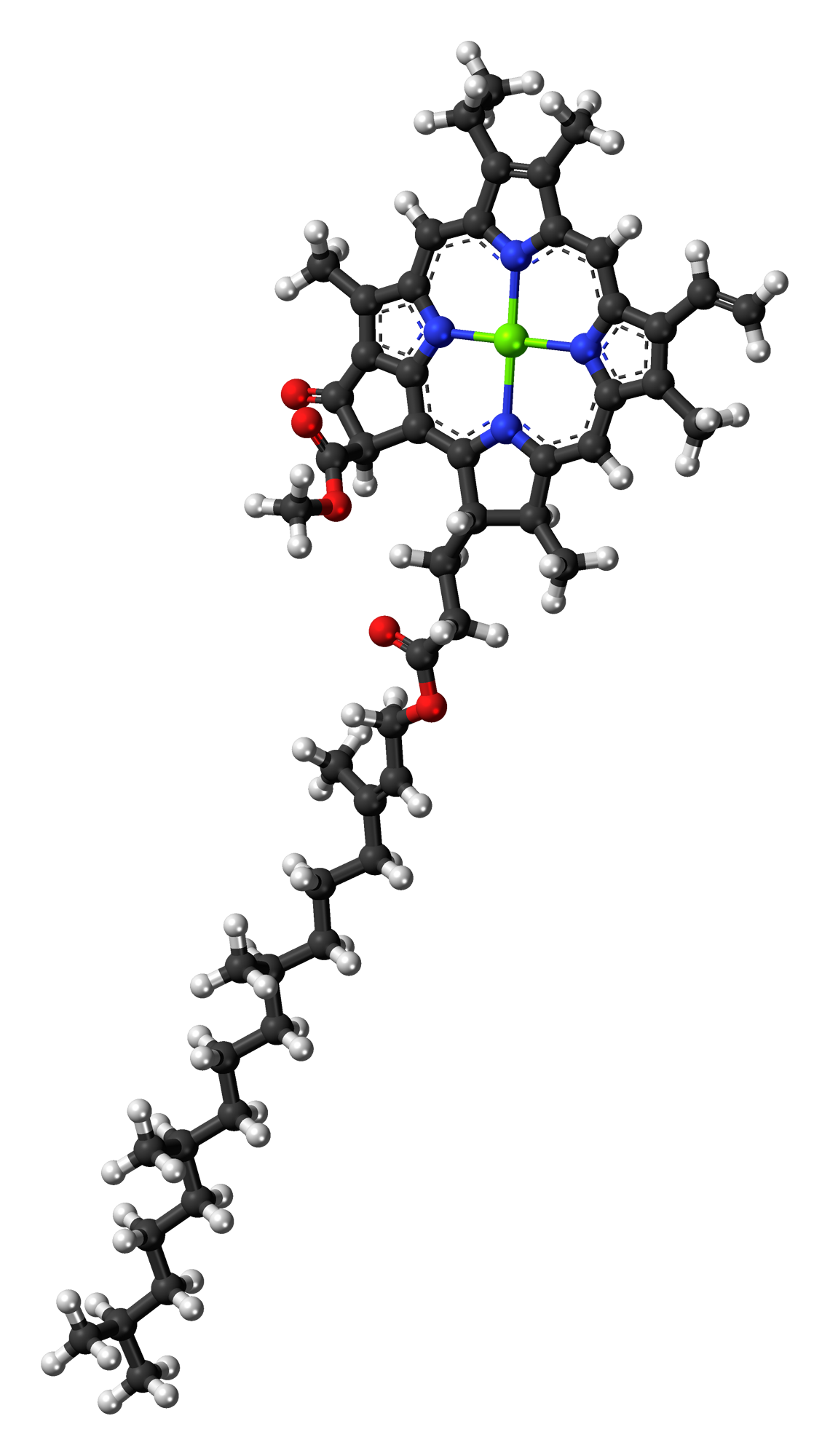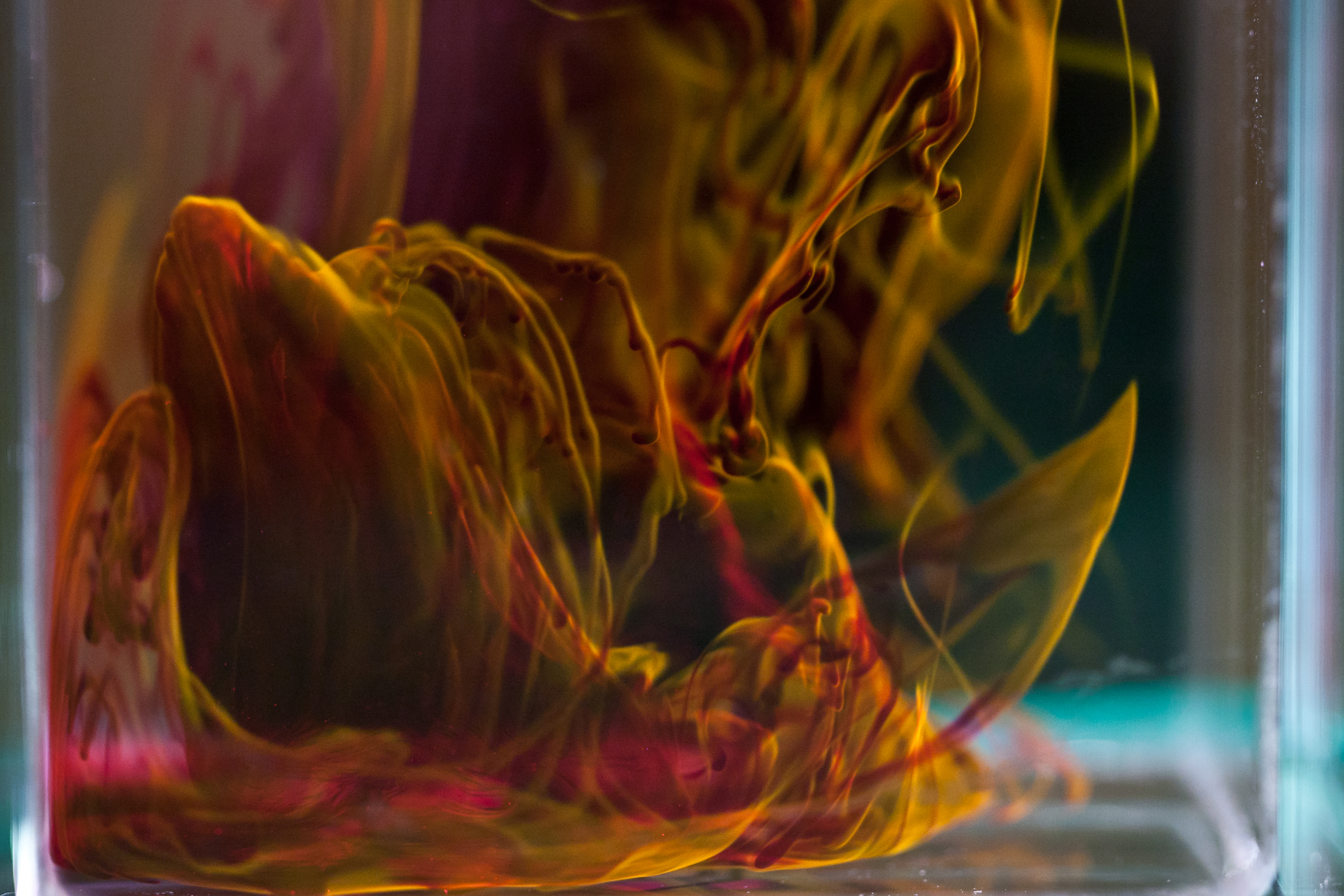|
Kreft's Dichromaticity Index
Kreft's dichromaticity index (DI) is a measure for quantification of dichromatism. It is defined as the difference in hue angle (Δhab) between the color of the sample at the dilution, where the chroma (color saturation) is maximal, and the color of four times more diluted (or thinner) and four times more concentrated (or thicker) sample. The two hue angle differences are called the dichromaticity index towards lighter (Kreft's DIL) and dichromaticity index towards darker (Kreft's DID) respectively. Kreft's dichromaticity indexes DIL and DID for pumpkin seed oil, which is one of the most dichromatic substances, are −9 and −44, respectively. This means, that pumpkin seed oil changes its color from green-yellow to orange-red (for 44 degrees in Lab color space) when the thickness of the observed layer is increased from cca 0.5 mm to 2 mm; and it changes slightly towards green (for 9 degrees) if its thickness is reduced for four-fold. The color of pumpkin oil at increa ... [...More Info...] [...Related Items...] OR: [Wikipedia] [Google] [Baidu] |
Pumpkin Oil - CIELab
A pumpkin is a cultivar, cultivated winter squash in the genus ''Cucurbita''. The term is most commonly applied to round, orange-colored squash varieties, but does not possess a scientific definition. It may be used in reference to many different squashes of varied appearance and belonging to multiple species in the ''Cucurbita'' genus. The use of the word "pumpkin" is thought to have originated in New England in North America, derived from a word for melon, or a native word for round. The term is sometimes used interchangeably with "Cucurbita, squash" or "winter squash", and is commonly used for some cultivars of ''Cucurbita argyrosperma'', ''Cucurbita ficifolia'', ''Cucurbita maxima'', ''Cucurbita moschata'', and ''Cucurbita pepo''. ''C. pepo'' pumpkins are among the oldest known domesticated plants, with evidence of their cultivation dating to between 7000 BCE and 5500 BCE. Wild species of ''Cucurbita'' and the earliest domesticated species are native to North America (p ... [...More Info...] [...Related Items...] OR: [Wikipedia] [Google] [Baidu] |
Chlorophyll A
} Chlorophyll ''a'' is a specific form of chlorophyll used in oxygenic photosynthesis. It absorbs most energy from wavelengths of violet-blue and orange-red light, and it is a poor absorber of green and near-green portions of the spectrum. Chlorophyll does not reflect light but chlorophyll-containing tissues appear green because green light is diffusively reflected by structures like cell walls. This photosynthetic pigment is essential for photosynthesis in eukaryotes, cyanobacteria and prochlorophytes because of its role as primary electron donor in the electron transport chain. Chlorophyll ''a'' also transfers resonance energy in the antenna complex, ending in the reaction center where specific chlorophylls P680 and P700 are located. Distribution of chlorophyll ''a'' Chlorophyll ''a'' is essential for most photosynthetic organisms to release chemical energy but is not the only pigment that can be used for photosynthesis. All oxygenic photosynthetic organisms use chloroph ... [...More Info...] [...Related Items...] OR: [Wikipedia] [Google] [Baidu] |
Rhodamine
Rhodamine is a family of related dyes, a subset of the triarylmethane dyes. They are derivatives of xanthene. Important members of the rhodamine family are rhodamine 6G, Rhodamin WT, Texas Red (Sulforhodamin 101), rhodamine 123, and rhodamine B. They are mainly used to dye paper and inks, but they lack the lightfastness for fabric dyeing. Use Aside from their major applications, they are often used as a tracer dye, e.g. to determine the rate and direction of flow and transport of water. Rhodamine dyes fluoresce and can thus be detected using Fluorometers. Rhodamine dyes are used extensively in biotechnology applications such as fluorescence microscopy, flow cytometry, fluorescence correlation spectroscopy and ELISA. Rhodamine 123 is used in biochemistry to inhibit mitochondrion function. Rhodamine 123 appears to bind to the mitochondrial membranes and inhibit transport processes, especially the electron transport chain, thus slowing down cellular respiration. It is a ... [...More Info...] [...Related Items...] OR: [Wikipedia] [Google] [Baidu] |
Resazurin
Resazurin (7-Hydroxy-3''H''-phenoxazin-3-one 10-oxide) is a phenoxazine dye that is weakly fluorescent, nontoxic, cell-permeable, and redox‐sensitive. Resazurin has a blue to purple color above pH 6.5 and an orange color below pH 3.8. It is used in microbiological, cellular, and enzymatic assays because it can be irreversibly reduced to the pink-colored and highly fluorescent resorufin (7-Hydroxy-3''H''-phenoxazin-3-one). At circum-neutral pH, resorufin can be detected by visual observation of its pink color or by fluorimetry, with an excitation maximum at 530-570 nm and an emission maximum at 580-590 nm. When a solution containing resorufin is submitted to reducing conditions (Eh < -110 mV), almost all resorufin is reversibly reduced to the translucid non-fluorescent [...More Info...] [...Related Items...] OR: [Wikipedia] [Google] [Baidu] |
Proflavin
Proflavine, also called proflavin and diaminoacridine, is an acriflavine derivative, a disinfectant bacteriostatic against many gram-positive bacteria. It has been used in the form of the dihydrochloride and hemisulfate salts as a topical antiseptic, and was formerly used as a urinary antiseptic. Proflavine is also known to have a mutagenic effect on DNA by intercalating between nucleic acid base pairs. It differs from most other mutagenic components by causing basepair-deletions or basepair-insertions and not substitutions. In the presence of light, proflavine can induce double-stranded breaks in DNA. Proflavine is a fluorescent dye that is sometimes used in microscopic in-vivo imaging due to its intercalation properties. However, there was concern that women exposed to proflavin could develop cervical cancer since they have mutagenesis potential. However, the retrospective analysis performed by Pantano et. al. demonstrated that there is no increased cervical cancer risk aft ... [...More Info...] [...Related Items...] OR: [Wikipedia] [Google] [Baidu] |
Nile Red
Nile red (also known as Nile blue oxazone) is a lipophilic stain. Nile red stains intracellular lipid droplets yellow. In most polar solvents, Nile red will not fluoresce; however, when in a lipid-rich environment, it can be intensely fluorescent, with varying colors from deep red (for polar membrane lipid) to strong yellow-gold emission (for neutral lipid in intracellular storages). The dye is highly solvatochromic and its emission and excitation wavelength both shift depending on solvent polarity and in polar media will hardly fluoresce at all. Nile red has applications in cell biology, where it can be used as a membrane dye which can be readily visualized using an epifluorescence microscope with excitation and emission wavelengths usually shared with red fluorescent protein. Nile red has also been used as part of a sensitive detection process for microplastics in bottled water. Additionally, nile red is a remarkable candidate in fabricating membrane for different sensors ... [...More Info...] [...Related Items...] OR: [Wikipedia] [Google] [Baidu] |
Malachite Green
Malachite green is an organic compound that is used as a dyestuff and controversially as an antimicrobial in aquaculture. Malachite green is traditionally used as a dye for materials such as silk, leather, and paper. Despite its name the dye is not prepared from the mineral malachite; the name just comes from the similarity of color. Structures and properties Malachite green is classified in the dyestuff industry as a triarylmethane dye and also using in pigment industry. Formally, malachite green refers to the chloride salt , although the term malachite green is used loosely and often just refers to the colored cation. The oxalate salt is also marketed. The anions have no effect on the color. The intense green color of the cation results from a strong absorption band at 621 nm ( extinction coefficient of ). Malachite green is prepared by the condensation of benzaldehyde and dimethylaniline to give leuco malachite green (LMG): : Second, this colorless leuco compound, ... [...More Info...] [...Related Items...] OR: [Wikipedia] [Google] [Baidu] |
Hemoglobin
Hemoglobin (haemoglobin, Hb or Hgb) is a protein containing iron that facilitates the transportation of oxygen in red blood cells. Almost all vertebrates contain hemoglobin, with the sole exception of the fish family Channichthyidae. Hemoglobin in the blood carries oxygen from the respiratory organs (lungs or gills) to the other tissues of the body, where it releases the oxygen to enable aerobic respiration which powers an animal's metabolism. A healthy human has 12to 20grams of hemoglobin in every 100mL of blood. Hemoglobin is a metalloprotein, a chromoprotein, and a globulin. In mammals, hemoglobin makes up about 96% of a red blood cell's dry matter, dry weight (excluding water), and around 35% of the total weight (including water). Hemoglobin has an oxygen-binding capacity of 1.34mL of O2 per gram, which increases the total blood oxygen capacity seventy-fold compared to dissolved oxygen in blood plasma alone. The mammalian hemoglobin molecule can bind and transport up to four ... [...More Info...] [...Related Items...] OR: [Wikipedia] [Google] [Baidu] |
Fluorescein
Fluorescein is an organic compound and dye based on the xanthene tricyclic structural motif, formally belonging to Triarylmethane dye, triarylmethine dyes family. It is available as a dark orange/red powder slightly soluble in water and alcohol. It is used as a fluorescent Flow tracer, tracer in many applications. The color of its aqueous solutions is green by reflection and orange by transmission (its spectral properties are dependent on pH of the solution), as can be noticed in spirit level, bubble levels, for example, in which fluorescein is added as a colorant to the Alcohol (chemistry), alcohol filling the tube in order to increase the visibility of the air bubble contained within. More concentrated solutions of fluorescein can even appear red (because under these conditions nearly all incident emission is re-absorbed by the solution). It is on the WHO Model List of Essential Medicines, World Health Organization's List of Essential Medicines. Uses Fluorescein sodium, t ... [...More Info...] [...Related Items...] OR: [Wikipedia] [Google] [Baidu] |
Crystal Violet
Crystal violet or gentian violet, also known as methyl violet 10B or hexamethyl pararosaniline chloride, is a triphenylmethane, triarylmethane dye used as a histological stain and in Gram staining, Gram's method of classifying bacteria. Crystal violet has antibacterial, Antifungal medication, antifungal, and anthelmintic (Anthelmintic, vermicide) properties and was formerly important as a topical antiseptic. The medical use of the dye has been largely superseded by more modern drugs, although it is still listed by the World Health Organization. The name ''gentian violet'' was originally used for a mixture of methyl pararosaniline dyes (methyl violet), but is now often considered a synonym for ''crystal violet''. The name refers to its colour, being like that of the petals of certain Gentiana, gentian flowers; it is not made from gentians or list of plants known as violet, violets. Production A number of possible routes can be used to prepare crystal violet. The original procedur ... [...More Info...] [...Related Items...] OR: [Wikipedia] [Google] [Baidu] |





